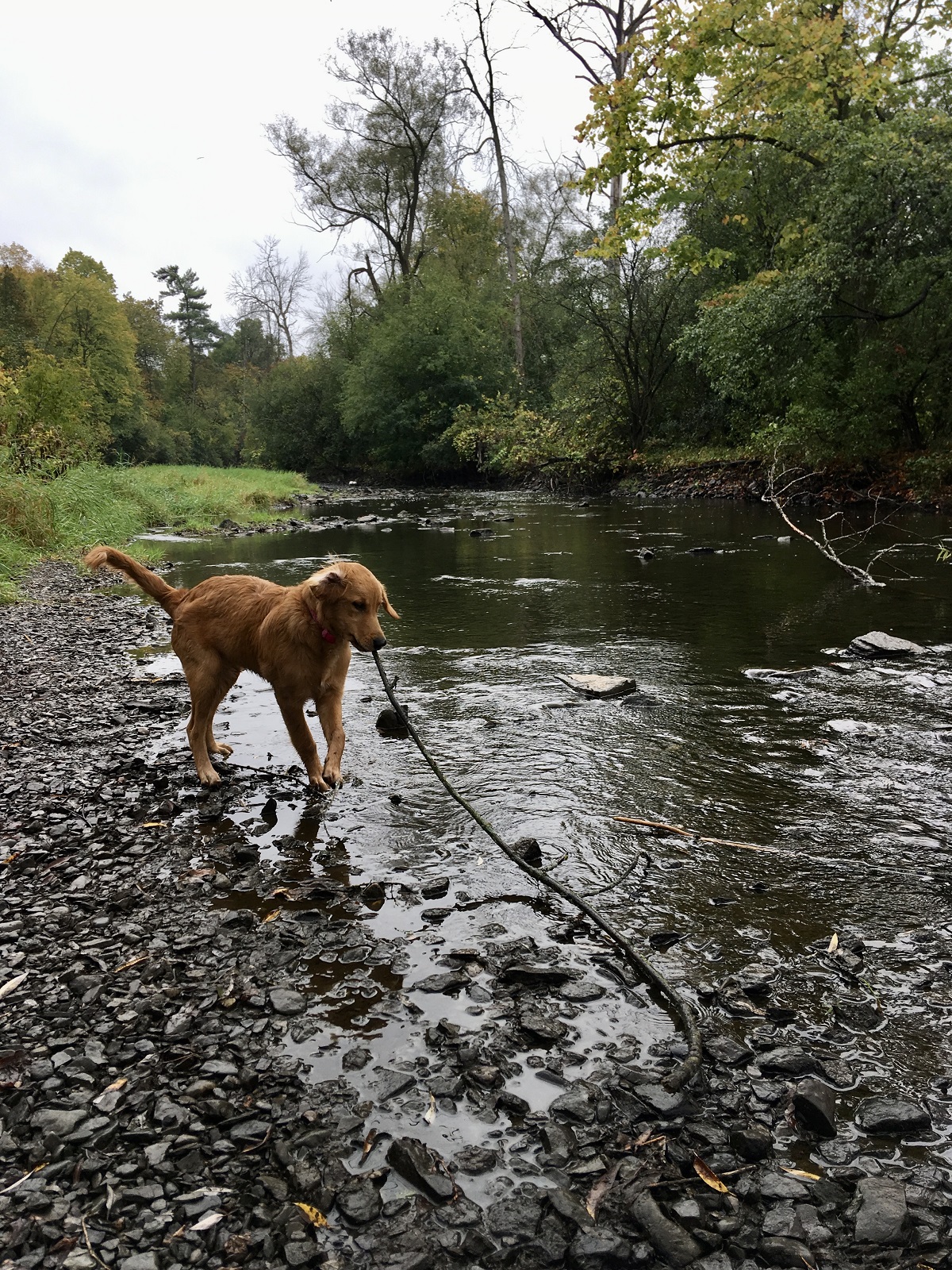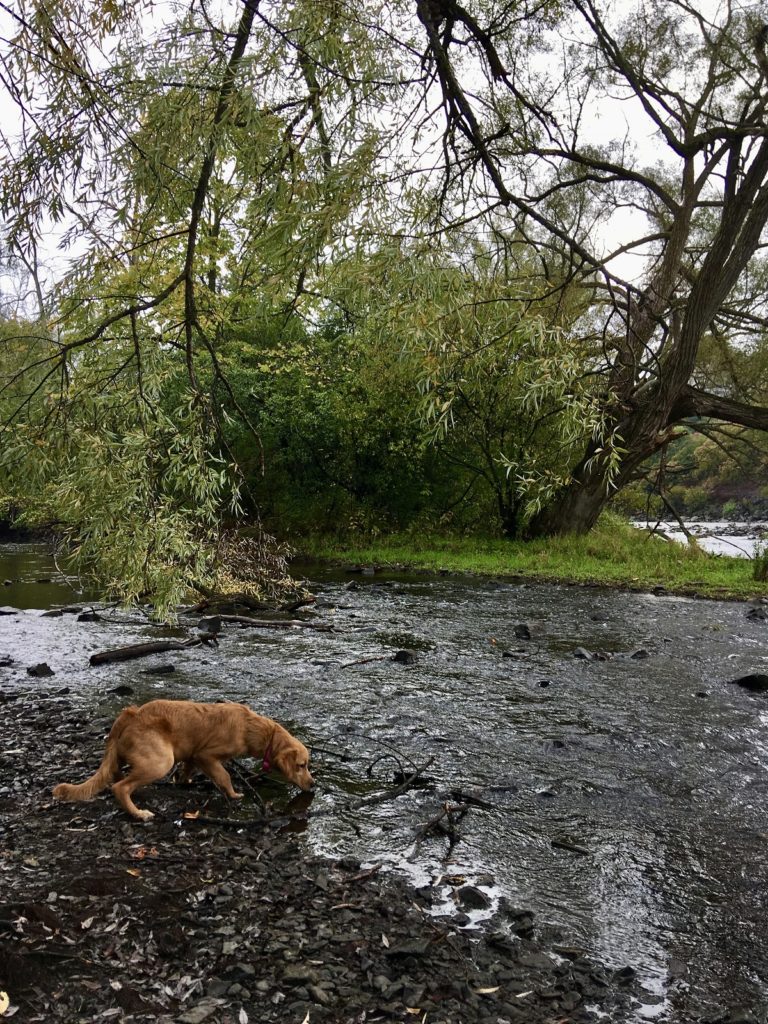Animal Chatter
By Iris Winston
Every tail has a tale to tell as dogs communicate with each other and with their humans.

Most of us think that a wagging tail is the sign of a happy dog. Often this is true, but the speed of the wag, the position and direction of the tail, whether it is stiff or relaxed—together with other physical indicators—have much more to say about what’s going on in a dog’s mind.
The familiar happy wag with the tail moving back and forth quickly is often accompanied by other signs of joy, such as a broad smile, tapping toes, perky ears and dropping into a play bow. Clearly demonstrating delight, your dog may be welcoming you home, anticipating a walk in the park, preparing for a session of ball throwing or getting ready to meet a two- or four-legged friend.
Even dogs with short or docked tails, while at a disadvantage in communicating all aspects of tail language, are easily able to show their happiness, even if it means wagging their entire rear ends.
A less excited but still happy and secure dog shows his mood by slower, more relaxed tail wagging, with the tail held a little higher. This is likely to be his “dinner’s coming soon” position.

A very slow wag may indicate that he is confused or is trying to determine what is going on, while a wag reduced to a mere quiver, accompanied by the tail being stiff, demonstrates tension.
In fact, when the tail is stiff, you should be alert. The dog certainly is.
When the tail is horizontal and stiff and he is holding back, he is simply being cautious. He is about to meet a new dog or a human stranger and is checking before moving into sniffing the other animal’s rear, wagging at the new person or deciding that it’s time to guard his human and react negatively to the strangers. A more easygoing dog will enter first meetings with his tail relaxed but horizontal to indicate he is paying attention. On the other hand, if a dog’s tail is lifted up and stiff, particularly when accompanied by other signs, such as raised hackles or a deep growl, it’s time to remove Fido and prevent a potentially difficult encounter.
The dog who carries his tail pointing straight up is indicating confidence, as is the dog who carries his tail curled over his back. This may not always be accurate for a dog born with an umbrella tail, such as a Siberian Husky. Northern dogs of this type may simply be using their tails to keep the snow off their backs, rather than to express mood. It’s worth remembering that if a breed’s characteristics blur communication, it’s important to check other signals, such as facial expression, ear position and voice to understand the meaning and communicate with your pet most effectively.

The dog who feels insecure or is uncomfortable may lower his tail, keeping it close to his hind legs. He needs a stroke and some comforting words to help him through a difficult moment. The dog with his tail tucked close to his legs, often also rolling over to expose his underside, is submissive and needs you to help build his confidence. When he tucks his tail right between his legs and tries to shrink down, he is afraid and needs immediate reassurance.
The opposite is true of a dog with tail outstretched and down. This look speaks of a relaxed canine ready to spring into action with a happy wag in preparation for his afternoon walk.
Cats, too, speak the language of tails, but their signals are not always the same as the tales that dogs tell. For example, cats may wag their tails when they are angry or upset. If the tail moves back and forth quickly, the cat is afraid or cross. And a downward position of the tail can suggest aggression. Just give her space. Alternatively, when the tail moves slowly, it may simply mean that the cat is focused on an object and about to pounce.
As with a dog, a cat’s tail held high indicates confidence. Straight to the sky speaks of contentment, while a tail curved into a question mark is asking you to play.
Two other very obvious signals are the puffed-out tail and the tail surrounding another animal. The puffed-up cat is clearly trying to make herself look bigger and more imposing in the face of danger. And when she wraps her tail around another animal, she is signaling friendship. Such togetherness and bonding should be encouraged among all the pets in the household.
Almonte, Ontario, writer Iris Winston is a former executive director of the Canadian Federation of Humane Societies. She has been an animal lover all her life. Her pets have always been important members of her family.






